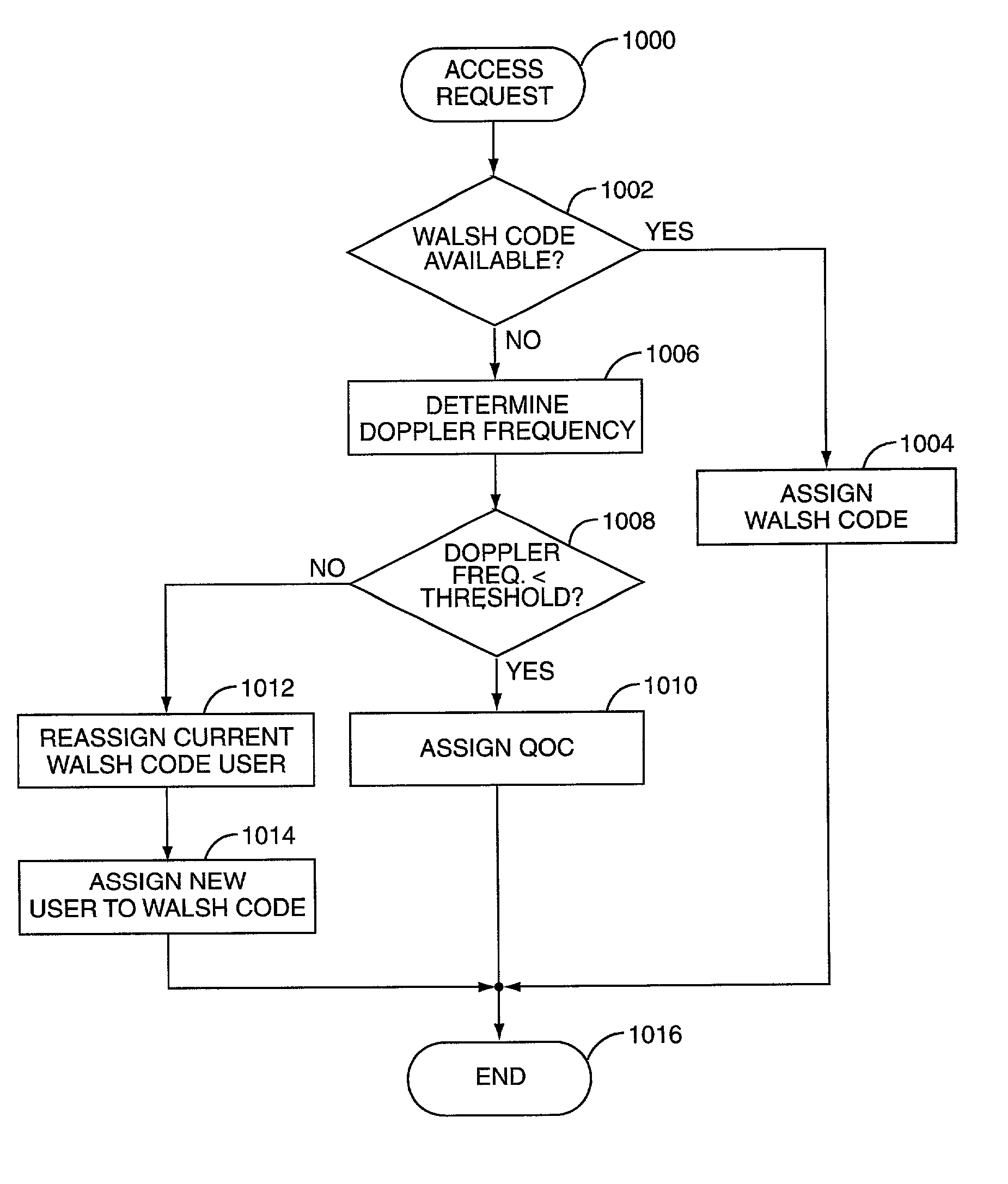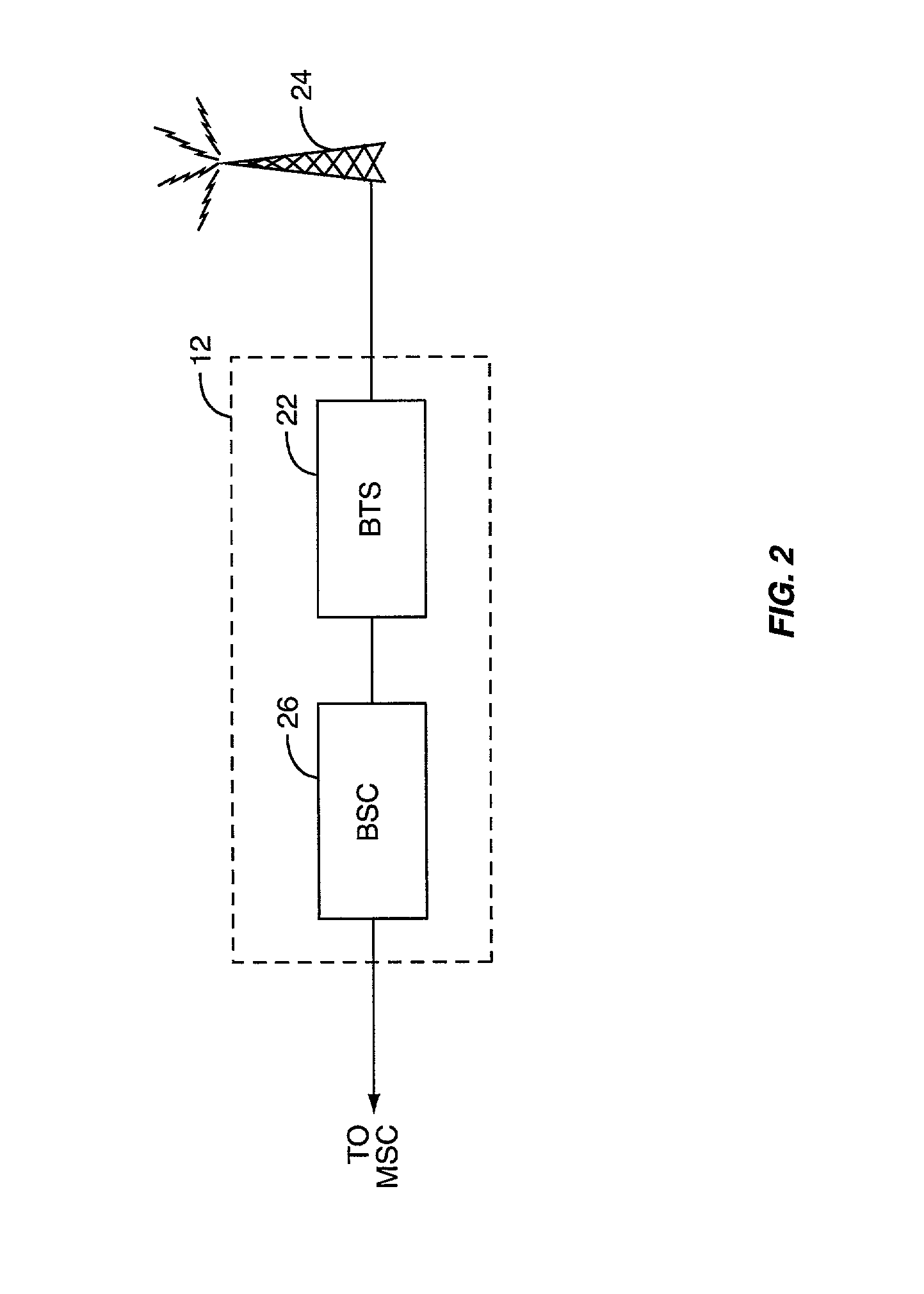CDMA system using quasi-orthogonal codes
a code and code technology, applied in data switching networks, frequency-division multiplexes, instruments, etc., can solve the problems of cdma standards and inability to achieve power control for fast user mobility, and achieve the effects of reducing performance degradation, reducing performance differences, and high mobility
- Summary
- Abstract
- Description
- Claims
- Application Information
AI Technical Summary
Benefits of technology
Problems solved by technology
Method used
Image
Examples
Embodiment Construction
[0017]The present invention is related to CDMA systems that employ quasi-orthogonal codes, such as cdma2000. In conventional CDMA systems a set of codes called Walsh codes, are used as spreading codes. There are a total of 64 Walsh codes, which limits the number of users. In the cdma2000 standard, when all Walsh codes are assigned, additional users may be assigned a code from a set of quasi-orthogonal codes. Like Walsh codes, all codes in the set of quasi-orthogonal codes are orthogonal. However, the quasi-orthogonal codes are not orthogonal to the set of Walsh codes. Thus, use of quasi-orthogonal codes tends to increase interference.
[0018]In general, the quasi-orthogonal code users will be outnumbered by Walsh code users. The relatively few users of quasi-orthogonal codes will, therefore, experience relatively high interference from the larger number of Walsh code users. The Walsh code users will receive less interference from the smaller number of quasi-orthogonal code users. Thus...
PUM
 Login to View More
Login to View More Abstract
Description
Claims
Application Information
 Login to View More
Login to View More - R&D
- Intellectual Property
- Life Sciences
- Materials
- Tech Scout
- Unparalleled Data Quality
- Higher Quality Content
- 60% Fewer Hallucinations
Browse by: Latest US Patents, China's latest patents, Technical Efficacy Thesaurus, Application Domain, Technology Topic, Popular Technical Reports.
© 2025 PatSnap. All rights reserved.Legal|Privacy policy|Modern Slavery Act Transparency Statement|Sitemap|About US| Contact US: help@patsnap.com



